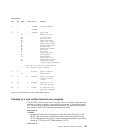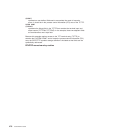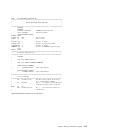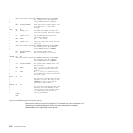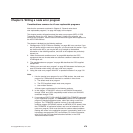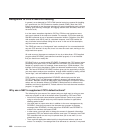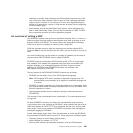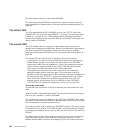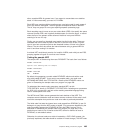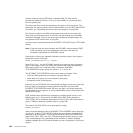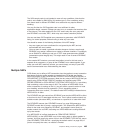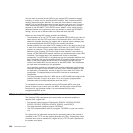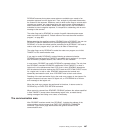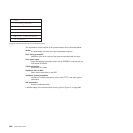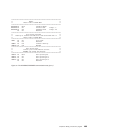other, reusable NEBs for general use. If you expect to accumulate error statistics
about 10 LUs concurrently, you need 10–12 NEBs.
Each NEB may contain multiple recording areas, one being used for each group of
errors you want to distinguish. The error groups correspond to those in the NEP.
That is, they are groups of error types requiring separate processing logic.
Each recording area is known as an error status block (ESB). You specify the space
reserved for each ESB, and it typically includes space to count the errors, or record
when the first of the present series occurred. Note that in any one NEB the
counting is for one LU only.
Finally, you can specify a threshold count and a time limit in the table. These are
constants that can be used by code in the NEP to test an ESB, to see if a given
type of error has occurred more than the threshold number of times in the stated
interval. The time limit also affects the interval between using a general NEB for
one LU and then reusing it for another.
A minimal NET would simply consist of a handful of NEBs, each with just one ESB,
grouping together all types of error that are of interest.
Coding the sample NEP
The sample NEP is coded using the macro DFHSNEP. The basic form is as follows:
DFHSNEP TYPE=INITIAL
Specific error handling code. For example:
DFHSNEP TYPE=DEF3270
DFHSNEP TYPE=FINAL
END DFHNEPNA
By default, this generates a module called DFHZNEP, which works with a node
error table called DFHNET. If you want to use another table, you could code
NETNAME=MYTABLE after TYPE=INITIAL. Details of the DFHSNEP macro are
given in “Generating the sample node error program” on page 499.
To understand the sample code, generate a standard NEP, as with
TYPE=DEF3270, shown in “DFHSNEP TYPE=DEF3270—including error processors
for 3270 LUs” on page 500, and look at the resulting assembler-language listing.
Here is a description of the code.
The INITIAL and FINAL macros generate the basic skeleton of the NEP. This
comprises some initialization code and some common routines. All the code is built
round the assumption that you have a node error table as previously described.
The initial code first tests the internal error code passed from DFHZNAC to see if it
belongs to a group that the NEP needs to handle. (The groups are identified by the
code you supply between the DFHSNEP INITIAL and FINAL macros. This is
described in “Generating the sample node error program” on page 499.) If the
particular error code is not of interest to the NEP, control is returned at once to
DFHZNAC, to take default actions.
Otherwise, the relevant node error table is located by a CICS LOAD request. (As
previously explained, this table should be resident in virtual storage.) The NEP code
Chapter 9. Writing a node error program 483



